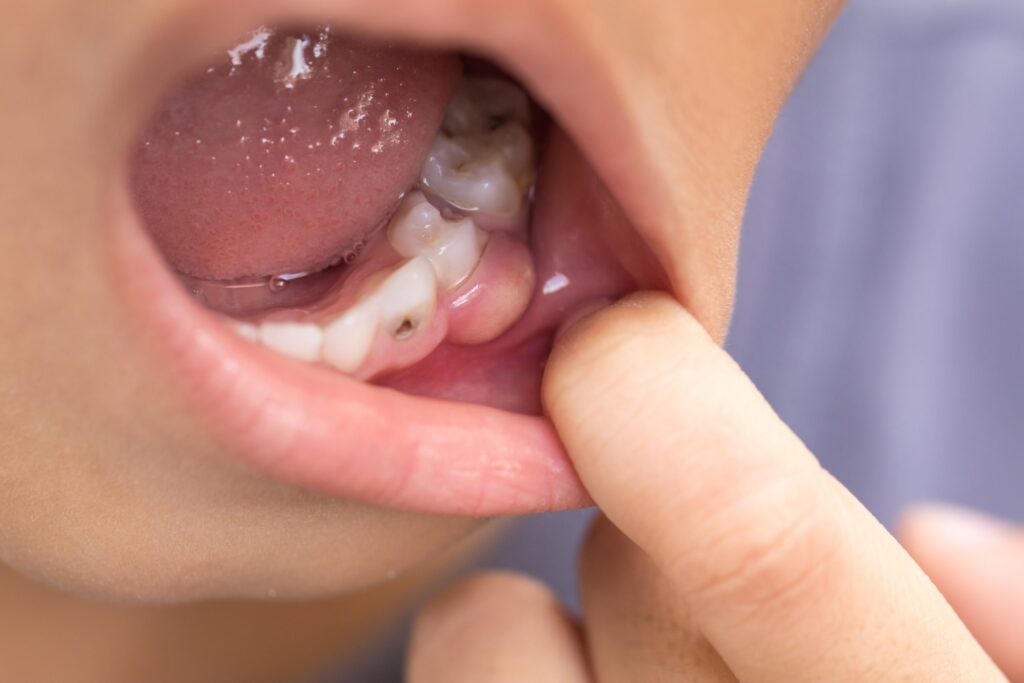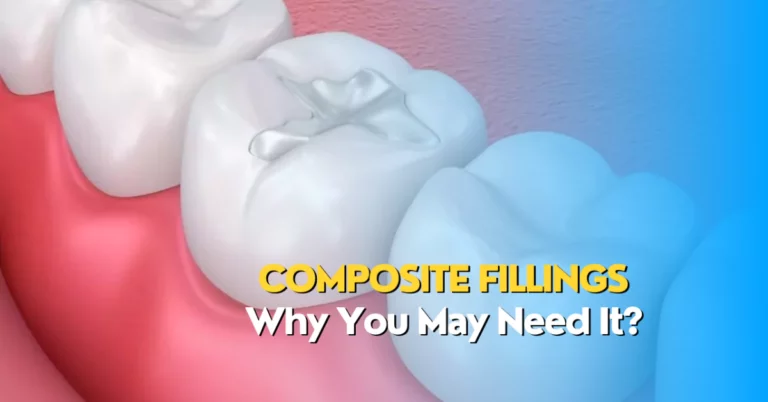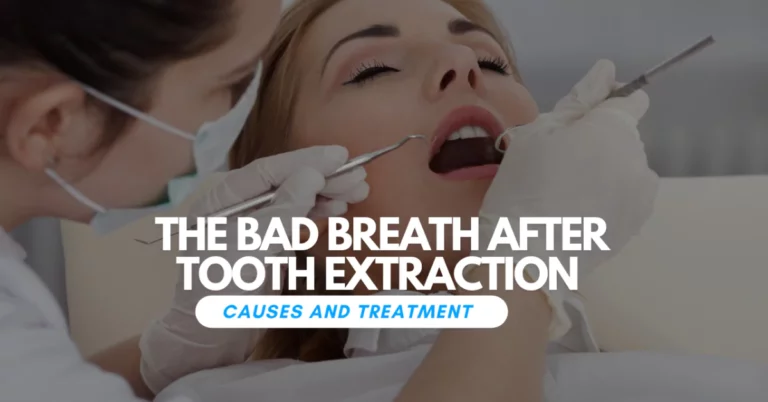Gumline Cavity: Exploring Types, Causes, Symptoms & Precautions
A gumline cavity is a type of tooth decay affecting the area near or below the gumline. Gumline cavities can cause pain, sensitivity, and tooth loss if left untreated. This article will explain what a gumline cavity is, what causes it, how to prevent it, and how to treat it.
Read More : Food Stuck in Wisdom Tooth Hole: Causes, Risks and Solutions
What is a Gumline Cavity?
A cavity is a hole in the tooth that forms when bacteria in the mouth produce acids that erode the tooth enamel. Cavities can occur on any part of the tooth, but they are more common on the chewing surfaces of the back teeth.
There are two types of gumline cavities:
Smooth Surface Cavity
It forms on the smooth side of the tooth, just above the gum line. This type of cavity is an outcome of plaque buildup along the gumline. After eating and drinking, a sticky film of bacteria and food debris called plaque can accumulate on your teeth.
If left unattended by brushing and flossing, plaque can solidify into tartar, a yellowish buildup that adheres to your teeth and gums. Tartar can irritate the gums and make them recede, exposing more of the tooth surface to decay.
Root Cavity
It forms below the gum line, on the root of the tooth. This type of cavity is usually caused by gum recession due to aging. Gum recession exposes the tooth’s root, which is covered by a softer cementum material. Cementum is more vulnerable to decay than enamel and can be easily damaged by plaque and acids.
Read More: Can I Drink Coffee After Tooth Extraction?
What if the Cavity Is Below the Gumline?

The location of a cavity affects how it can be treated and how serious it can be. A cavity above or close to the gum line can be treated with a dental filling, a material that fills the hole.
A cavity below the gumline can be more challenging to treat and may require more extensive procedures. A root cavity can’t be fixed with a regular filling because it is hard to access with a drill or a laser.
Sometimes, a dentist may need minor gum surgery to expose and fill the cavity. In some other cases, a root canal treatment may be required to remove the infected pulp (the soft tissue inside the tooth) and seal the tooth with a crown (a cap that covers and protects the tooth).
What Are Common Reasons Gumline Cavities Appear?
Gumline cavities are mainly caused by plaque buildup along or below the gum line, which leads to enamel erosion and root decay.
However, some key factors can raise your risk of developing gumline cavities, such as:
Poor Oral Hygiene Habits
To avoid plaque and tartar formation on your teeth and gums, brush your teeth regularly with fluoride toothpaste and floss. If you don’t do this, bacteria might have all they require to develop and produce acids that can harm your teeth.
Aging
As you age, your gums may naturally recede due to wear and tear or loss of collagen (a protein that supports your skin). It can expose more of your tooth roots to plaque and acids, making them more prone to decay.
Dry mouth
A dry mouth is a condition where you don’t have enough saliva to keep it moist and clean. Saliva washes away remaining food particles and neutralizes acids in your mouth. Without enough saliva, teeth, and gums are more vulnerable to plaque and decay.
Gumline Cavity Symptoms
Gumline cavities may not cause any symptoms at first, but as they progress, they may cause:
- Pain in Your Tooth: A toothache is one of the most common signs of a cavity developing. You may feel pain when you bite, chew or drink something hot or cold.
- Temperature Sensitivity: Your teeth may become sensitive to hot or cold foods and drinks. You may feel a sharp or dull pain when you expose your teeth to temperature changes.
- Sensitivity to Sweets: If your tooth hurts after eating something sweet, it might be because of damage to your enamel or cementum. Sugar can trigger the bacteria in your mouth to produce more acids that attack your teeth.
- Stains on the Surface of Your Tooth: You may notice white, brown, or black spots on your tooth. These are signs of enamel erosion or decay. White spots indicate early decay, while brown or black spots indicate more advanced decay.
- Pits or Holes: You may see or feel a small hole in your tooth. It is a cavity that has reached the dentin, the layer under the enamel.
Treating Gumline Cavities
The treatment for gumline cavities depends on the location and severity of the decay.
Some of the common treatments for gumline cavities are:
Dental Filling
A dental filling is a material that fills in the hole and restores the shape and function of the tooth. It can be made of different materials, such as composite resin. A dental filling is suitable for smooth surface cavities above or near the gum line.
Gum Surgery
Gum surgery is a procedure that involves lifting or cutting the gum tissue to expose the root cavity and fill it with a suitable material. It may be needed for root cavities below the gum line and is hard to access with a drill or a laser.
Root Canal Treatment
Root canal treatment involves removing the infected pulp (the soft tissue inside the tooth) and sealing the tooth with a crown (a cap that covers and protects the tooth). It may be needed for root cavities that have reached the pulp and caused infection.
Tooth Extraction
Tooth extraction is a procedure that involves removing the entire tooth from its socket in the jawbone. It may be needed for root cavities that are too large or deep to be treated with other methods.
Preventing Gumline Cavities
The best way to prevent gumline cavities is to keep your gums and teeth healthy by following these tips:
- Floss every day
- Rinse with an antibacterial mouthwash
- Schedule routine cleanings and checks with your dentist
- Avoid sugary foods and drinks
- Drink lots of water
- Quit smoking
Also Read : Foods That Cause Ear Wax: All You Need to Know
Frequently Asked Questions (FAQs)
Can Gum Line Cavities Be Fixed?
Yes, gum line cavities can be fixed with proper dental care and treatment. Depending on the location and severity of the decay, your dentist may ask for a dental filling, gum surgery, root canal treatment, or tooth extraction to restore your tooth.
How Long Can Cavities go Untreated?
Cavities can go untreated for a long time without causing any noticeable symptoms. However, this does not mean that they are harmless. If left untreated, cavities can grow more extensive and more profound, reaching the pulp and nerve of the tooth and causing pain.
Can You Brush Away a Cavity?
No, you cannot brush away a cavity once it has formed. Brushing your teeth can help remove plaque and prevent new cavities from forming, but it cannot reverse the damage already done to your enamel or cementum. The only way to fix a cavity is to treat it with a dentist.
How Long do Gum Line Fillings Last?
Gum line fillings can last several years if they are well-maintained and cared for. However, they are not permanent and may need to be replaced over time due to wear and tear or recurrent decay. You should follow good oral hygiene habits to make your fillings last longer.
When is it Too Late for a Filling?
It is always possible to get a filling for a cavity as long as enough healthy tooth structure is left to support it. However, if the cavity is too large or deep to be filled with a regular filling, you may need a more extensive procedure, such as a crown, an inlay, or an onlay.
Conclusion
A gumline cavity is a type of tooth decay that affects the area near or below the gumline. Gumline cavities can cause pain, sensitivity, infection, and tooth loss if left untreated. The best way to prevent gumline cavities is to keep your teeth and gums clean and healthy by following good oral hygiene habits.
You should see your dentist if you have any signs or symptoms of a gumline cavity.
Get more healthy tips for healthful life with these related articles on our blog:






